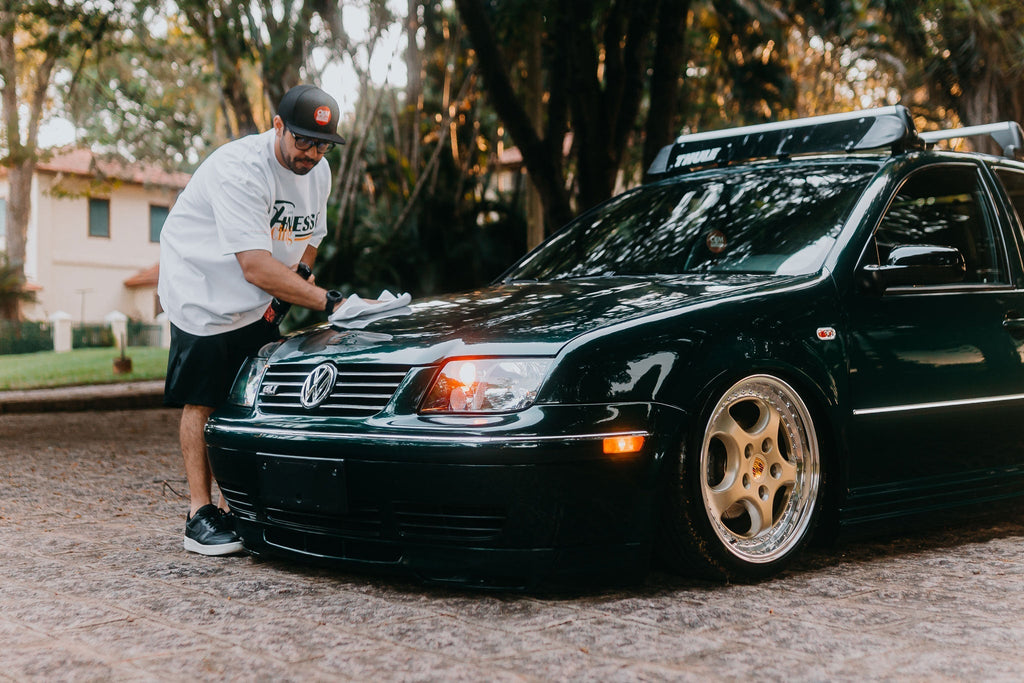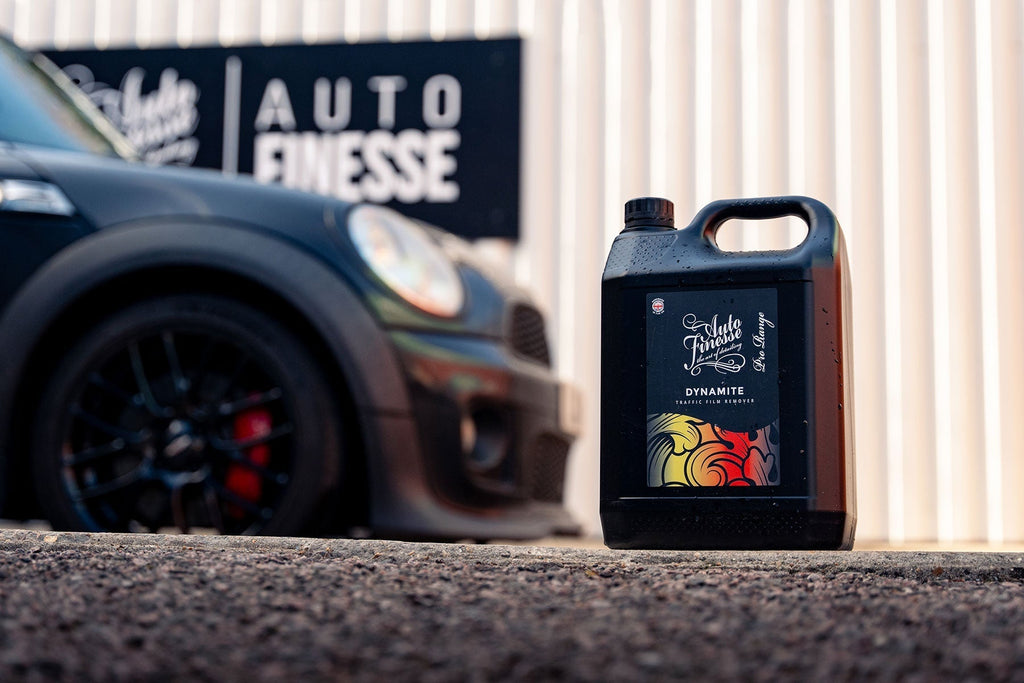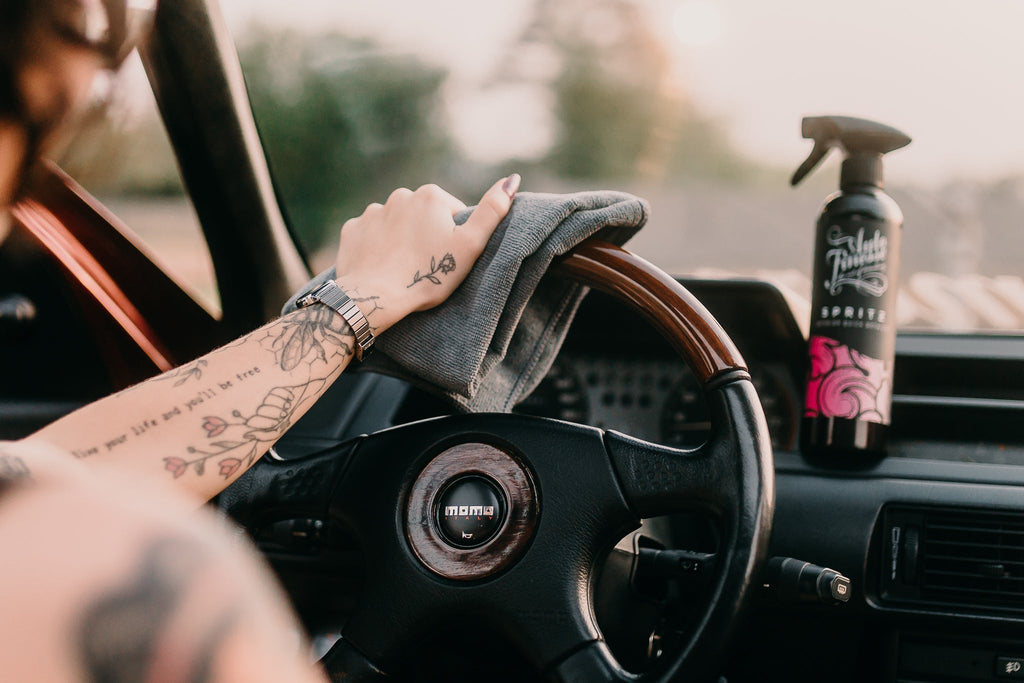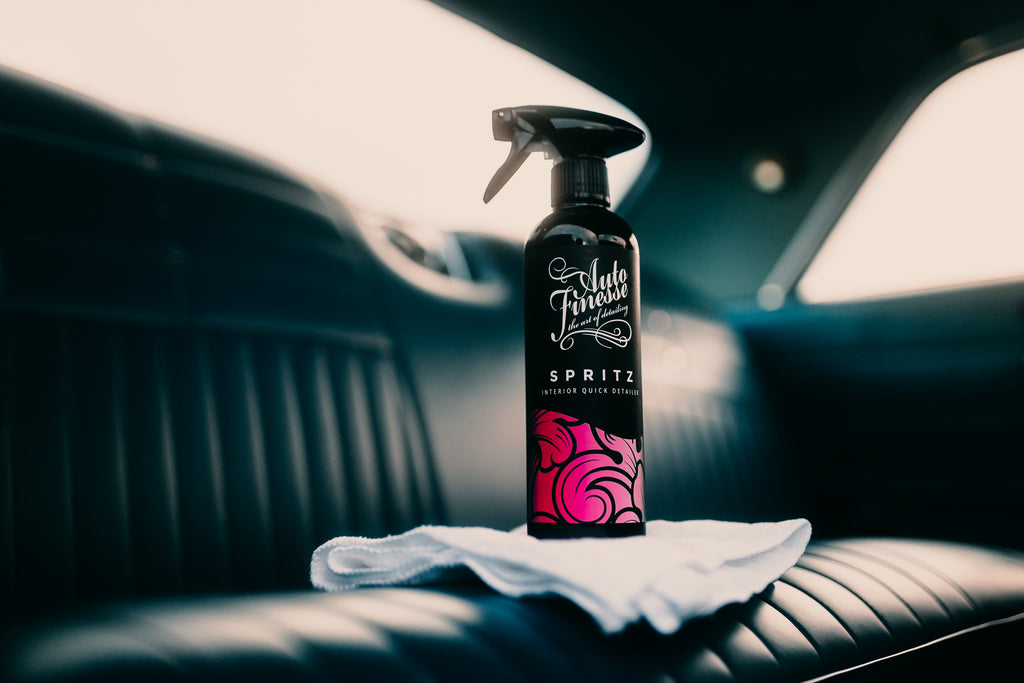Restoring & Protecting Carbon Fibre

In This Guide:
- Discover how to restore faded, cloudy carbon fibre parts to their former glory.
- Explore the simple yet effective protection solutions that keep your carbon fibre looking better than ever for longer.
- Follow our comprehensive step-by-step guide, covering everything from decontamination to polishing and ceramic coating.

What Are The Advantages?
- Save significantly on costly professional re-sanding and clear coating by restoring your carbon fibre parts at home.
- Achieve stunning results with just two or three high-quality products, tailored for carbon fibre care.
- Elevate your vehicle’s appearance while safeguarding your carbon fibre against future fading and oxidation.
Whether You're Looking For A Quick Refresh Or A Complete Restoration, We've Got Everything You Need...
Sleek, glossy carbon fiber parts are a hallmark of performance cars, but there's a common issue with both aftermarket and some factory add-ons—they often fall victim to UV fading and deterioration.
Cloudy or yellowing carbon fiber is a familiar sight, but contrary to popular belief, these issues can often be fully remedied without resorting to costly re-sanding and re-coating. As long as there’s no lacquer peeling, the solution lies in selecting the right abrasives and following up with proper protection.
With just a few specialized products, restoring and safeguarding your carbon fiber has never been easier. Here's how to get it done effortlessly.

What Causes Carbon Fibre To Fade?
The reality is that the carbon fibre weave itself isn’t the issue; the dull, cloudy appearance typically associated with faded carbon is almost always due to the resin layer on top.
Most aftermarket carbon parts, whether entirely carbon fibre or simply "skinned" fibreglass, are finished with a gel coat. This is a shiny, modified epoxy resin applied to visible surfaces. Unfortunately, gel coat is highly vulnerable to UV fading, oxidation, and heat damage, particularly on bonnets, where temperatures can skyrocket. These factors often lead to the milky, faded appearance seen on unprotected parts.
Environmental contaminants like tree sap, bird droppings, and bug splatter can also accelerate deterioration. Gel coat is softer than the clear coat found on automotive paint, meaning it degrades far more quickly without proper protection.
To address these issues, OEM parts and premium aftermarket products are often finished with lacquer (clear coat) for added durability. While lacquered finishes are more resistant to deterioration than bare gel coat, they still require adequate protection to withstand the elements and maintain their appearance over time.


Products For Restoring & Protecting
Before you begin, there are two key factors to consider: the extent of restoration required and the type of protection you'll be applying, which depends on the construction of your carbon fibre parts.
For the most durable protection on any carbon fibre surface, a ceramic coating is the optimal choice. On gel coat finishes, it's crucial to use a ceramic coating to establish a hard barrier against UV radiation and environmental damage. For this purpose, our user-friendly Caramics Paintwork Protection Kit is all you'll need.
For parts finished with clear coat, ceramic coatings remain highly recommended for superior durability. However, since clear coat is akin to paintwork, wax-based protection can also be effective. This is particularly handy if you're already waxing the rest of your vehicle. Additionally, for light restoration or quick enhancements, Tripple All-in-One Polish is an excellent option. It removes oxidation and minor swirls while leaving a protective layer of carnauba wax, delivering a warm, glossy finish.


For restoring heavily discolored or cloudy gel coat parts, a more aggressive abrasive will be necessary to cut back the surface. Since you'll be applying ceramic protection afterward, it’s essential to choose a product free of waxes or fillers that could interfere with the bonding process of the ceramic coating.
One Step All-in-One Compound is ideal for this task as it provides a genuine finish. This product features unique diminishing abrasives that begin as a coarse cutting compound and gradually refine into a fine finishing compound as you work, eliminating the need to switch products mid-process. After using One Step to restore your carbon parts, you can seamlessly move on to applying Caramics Protection.
Similarly, our Revitalise System compounds are also free of waxes or fillers and can be used for lighter defects where aggressive compounds aren’t necessary. These are especially helpful for more subtle restoration work.

Do It The AF Way!
To showcase the process, we brought in a car with a bonnet exhibiting severe fading and oxidation. While this panel may appear daunting, with the right techniques, it’s surprisingly simple to restore.

It's also important to note that all the following stages can be applied to both gel-coated and clear-coated parts, with the option to adapt the process using our DPX Dual Action Polisher and full-size Revitalise Pads, or our MPX Dual Action Polisher with Revitalise Spot Pads for smaller panels and parts.

Step 1 - Preparation
First and foremost, it's essential to ensure the part is free from grime and contamination. This involves a thorough wash using the usual pre-wash and contact methods, followed by decontamination with a Clay Bar or Clay Pad and Glide Clay Lube. This step is crucial in preparing the surface for compounding, as claying removes any embedded contaminants, preventing them from interfering with the polishing process and causing potential damage.
Once the entire surface is properly prepared, perform a quick wash with Lather Car Shampoo to remove any remaining lube, and then dry the part thoroughly with your Aqua Deluxe Drying Towel.


Step 2 - Polishing
For heavy degradation, One Step is our top choice as it allows us to compound, polish, and refine all in one step.
- Start by masking any surrounding paint, rubber, or plastic trim that could be at risk of abrasion.
- Attach a medium/firm Revitalise No:2 Pad and apply a few pea-sized drops of One Step.
- For larger areas, work in sections no bigger than 2 square feet (using a 5-inch pad). Spread the product across the area at the lowest speed setting.
- Gradually increase the speed and work the product in a slow, crosshatch pattern with light downward pressure.
- After working through the product, remove the pad and clean off any excess with a Pad Cleaning Brush.
- Return to the panel and decrease the speed slightly, performing two more passes to ensure the compound is fully broken down.
- Wipe away any residue using a fresh microfibre cloth.
Make sure to complete the entire part before applying protection. In this case, we’ve taped off half to show the difference side-by-side.









Step 3 - Protection
As mentioned earlier, adding protection after completing the panel is essential, particularly for gel coat surfaces. We've streamlined this process with our Caramics Paintwork Protection Kit, which provides up to 12 months of durable SiO2 protection.
Start by preparing the surface with the Prep Spray supplied in the kit. A quick spritz and wipe across the entire panel will remove any oils or residues, ensuring a clean surface for the coating.
Next, apply the coating. Open the Ceramic Resin Wipe, fold it into quarters (for a comfortable grip), and apply it to the panel. For larger sections, apply as you would to paintwork, and for smaller parts, simply scale down the application.
To ensure even coverage, first work in an up-and-down motion, then follow with side-to-side strokes in an overlapping pattern.
After 2-5 minutes, buff off any excess residue using a fresh microfibre cloth. For a thorough job, use a light source, such as our Swirl Spotter Detailing Light, to ensure all residue has been removed. Allow the coating to cure for 4-6 hours, and your carbon fibre will be fully protected!








Step 4 - Maintenance
The results here really speak for themselves, but as with all things in detailing, proper maintenance is key to keeping your car looking its best for longer.
Always stick to the right pre-wash and contact wash techniques during your maintenance washes. To help extend the lifespan of your Caramics coatings, use Caramics Enhancing Shampoo and Caramics Gloss Enhancer with every wash.
For more tips on enhancing and maintaining your coatings in optimal condition, be sure to check out our blog, Maintain and Enhance Your Ceramic Coatings In Under an Hour.






